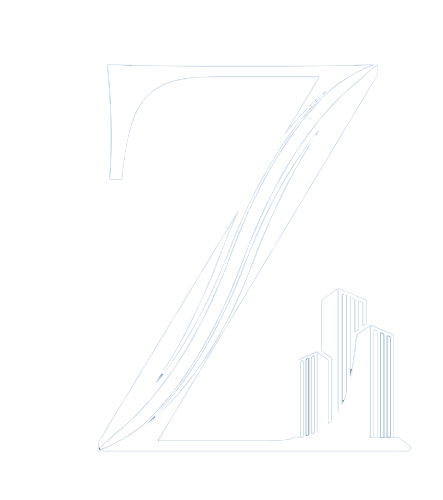What is BIM ?
Building Information Modelling or BIM is a term given to the process of creating, modifying, and analysing all the information about a building.
But isn’t this what architects have always been doing?
Precisely. But we also used to travel on foot. Now we use cars. The benefits? It saves a lot of time, energy, and cost. BIM breaks down the building into its constituent elements to understand and store information about it. It then clubs this information with aspects of construction beyond the 3 dimensions – time, cost, sustainability, operation, and safety.
The ideal building should be structurally stable, energy-efficient, and aesthetically pleasing. This is only possible through coordination between the various disciplines involved, like architectural, structural, and Mechanical, Electrical and Plumbing (MEP). Earlier workflows were slow – the architect would draw a plan, send it to the structural consultant, then they would revise the drawings accordingly, then send it to MEP consultants.

Advantages of BIM in Architectural Perspective:-
The BIM methodology has revolutionized the AECO (Architecture, Engineering, Construction, Operations) sector.
A big reason why BIM proves beneficial in improving design is that it enables collaboration between the designers, owners, and builders.
Having the same source of information improves the design, implementation, and decision-making process immensely.
Some other ways in which BIM helps architects are –

Improved communication –
BIM allows every information related to the design of the building to be shared across all concerned parties. This means that all the architects on the team can instantly refer to the latest designs.
This helps eliminate confusion and improves collaboration.
Better visualization –
BIM enables architects to see the buildings in basic
3D dimensions (height, width, and depth) along with 4D dimension (time to complete each element) and 5D dimension (cost at each stage).
These detailed visualization tools help speed up the process from design to construction.
Higher quality –
Due to proper documentation and calculation of important designs, there are higher-quality designs and construction processes. BIM allows construction managers to view where every element needs to go. This keeps the building activity operating at peak efficiency.
Preconstruction simulations –
BIM allows architects to visualize and plan the entire project during preconstruction. They can use space-use simulations and visualizations to analyse the space beforehand and make changes to the design before starting construction. Having a greater overview minimizes expensive changes later.
Improved coordination –
BIM significantly improves the coordination between subcontractors.
It also helps avoid clashes with automated clash detection. This reduces the amount of rework needed. Using BIM, one can avoid unforeseen issues by enabling easy reviewing.

Better scheduling –
BIM helps reduce the time of project cycles by eliminating construction schedule setbacks. It helps schedules to be planned with better accuracy. This along with improved coordination can help complete projects on time and save costs.
Simpler building maintenance –
BIM enables observing the anticipated operational costs for a building once it’s complete. This can help make better decisions to improve cost savings and thus, ensure simpler building maintenance in the future.
BIM is an invaluable tool for architects.
In fact, it’s probably fair to say that those architects utilizing BIM have a greater chance of creating good designs while saving costs and improving process efficiency.
Architectural BIM Process of Zenith BIM Services:-
BIM has played an important role in transforming design and construction projects. It allows our design teams to work more efficiently and allows them to explore designs before they are built.
Although our firm has standard operating procedures and manuals for BIM, the following are some of the core steps in the BIM process that architects usually follow:
Predesign –
The predesign stage is to determine if BIM can be used on the project. The first step is to have aBIM roadmap to define how the BIM tool fits into a company’s larger strategy. The roadmap can help develop and improve the architectural workflow by documenting short and long-term strategic goals. It helps identify ways to leverage BIM through building analysis simulation.
Schematic model –
After taking the necessary call on BIM, the architect starts creating the Schematic Model by using real


Presentation of the schematic model –
At this stage a walkthrough or rendering of the schematic model. Specific tools like Revit are used during this presentation. The team then finalizes the design after several tweaks.
Schematic design –
At this point, scheduling and estimating are done. Scheduling helps make sure that the building can be built in the allotted time and estimating helps track the cost of the project. However, it can be a very laborious process to count all the elements of a process project from a 2D plan. But BIM helps simplify this process and saves time.
Interference checks and coordination reviews –
In this phase of the design process, regular meetings are held between the architects, engineers, project managers, and construction managers. During these meetings, interference checks and coordination reviews are done. BIM provides a number of collaborative tools that make this process easier. Moreover, these meetings help catch any mistakes in the early design phase itself.
Element ownership –
Ownership of elements is another important factor to consider. It refers to figuring out which discipline modelled an element. The owner of a particular element, also known as Model Element Author or MEA. needs to pay extra attention to the coordination of that element.
Construction –
Construction is the final phase after the design is created. Since during the design phase, scheduling and estimating have been done, it means that items have been purchased and the schedule has been modified to complete the construction on time. During the construction phase, the construction manager and field superintendent collaborate with the design team to ensure that the design is implemented. BIM helps create a strong connection between design and construction and promotes collaboration. This results in making the journey from design to construction quite seamless.


Challenges Occurs on Implementation of BIM in Architectural Design:-
There are many Challenges occurs on implementation of BIM in Architectural Design. The Difficulty of Solutions for those challenges depends on complexity of Building Model / Architectural Design.
Here are some typical challenges & their solutions provided by ZBS Team.
(A) Clashes Between Structural & Architectural Building Components –
Solution –
We make RFI/RFC for clarifications. So, that we know which input/references should be followed or is latest.
(B) Unique Detail Components Used in Project
Solution –
We create Detail Components Family/Model with proper parameters & materials as per requirements. So, that we can better visualize from Architectural Perspective.
(C) Revision in Design –
Solution –
In Most of Cases Structural & MEP Changes affect Architectural Design. So, we revised them as necessary for proper Co-ordination.



